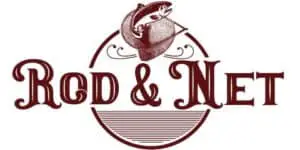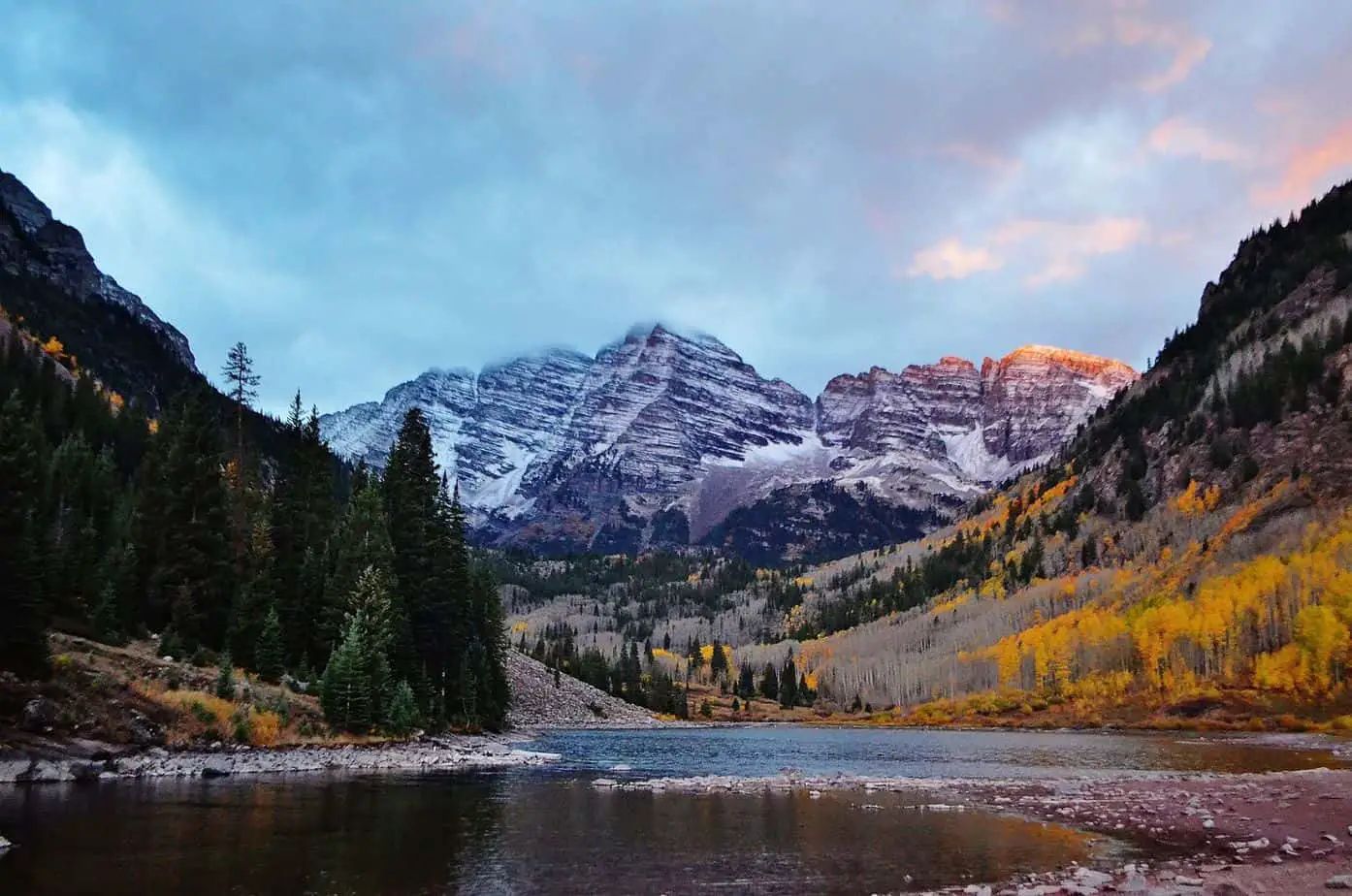For many fly-fishers, Colorado is the ultimate fly fishing destination. It is a state that offers rivers, streams, and lakes that have some of the best fishing in the US. It is a paradise for trout anglers that gives them the chance to hook into a brook, rainbow, brown and cutthroat trout, among many other species.
One great thing about fishing in Colorado is that the Colorado Parks and Wildlife Commission has designated certain rivers and reservoirs as Gold Medal Waters.
For water to be granted this status, it must be designated to have a stock of at least 60lbs of trout per acre, of which twelve or more must be above 14” in size. There are three lakes and over 300 miles of trout streams that have been granted Gold Medal Status.
This guide looks at the best fly fishing in Colorado. It shares some of the best waters and some other hidden gems that Colorado offers fly fishers.
If Colorado isn’t your goal, check out our articles on:
What Do I Need To Know Before Fishing In Colorado?
While fishing is available all year round, there are optimum times that would suit visitors intending to make that once in a lifetime trip, to make sure you get the best that this state has to offer. Wintertime can be harsh with many of the waters freezing over, but even then, there is usually still some prime sport to be had but remember to pack those thermals!
Optimum times vary from location to location, so it is best to check where the prime fishing is likely to be when planning your trip. For instance, if you fancy a shot at the Upper Colorado River, then aim for early June when large salmonfly hatches make for great sport.
For other times of the year, the Frying Pan River has excellent hatches of Green Drake Mayfly, which occur from Mid-August through to October.
The Arkansas River is a fantastic location to visit earlier in the year. From April through to the beginning of June, large hatches of Caddis drive the trout into a feeding frenzy.
Many of these locations are perfect opportunities for hiring guides. Wondering, “Should I hire a fly fishing guide?” Yes, you should. Read this article to understand why.
What Kit Should I Bring?
Appropriate clothing is essential. As far as fishing gear goes, if you are only packing a single rod, then local guides recommend a fast action 9-foot rod rated as a 4 weight. A weight-forward floating line will cover most fishing, but a sinking line is a good alternative for some waters.
It is best for flies to check some hatching guides before setting off and selecting your main flies to match them.
Do I Need A License To Fish In Colorado?
Yes, the legislation in Colorado requires all anglers to purchase a license. These can be purchased on an annual, weekly, or daily basis and can be purchased online before you visit, or in hundreds of retailers throughout the state or direct from the Colorado Parks and Wildlife Service.
The CPW web page provides all relevant information about how to get your license.
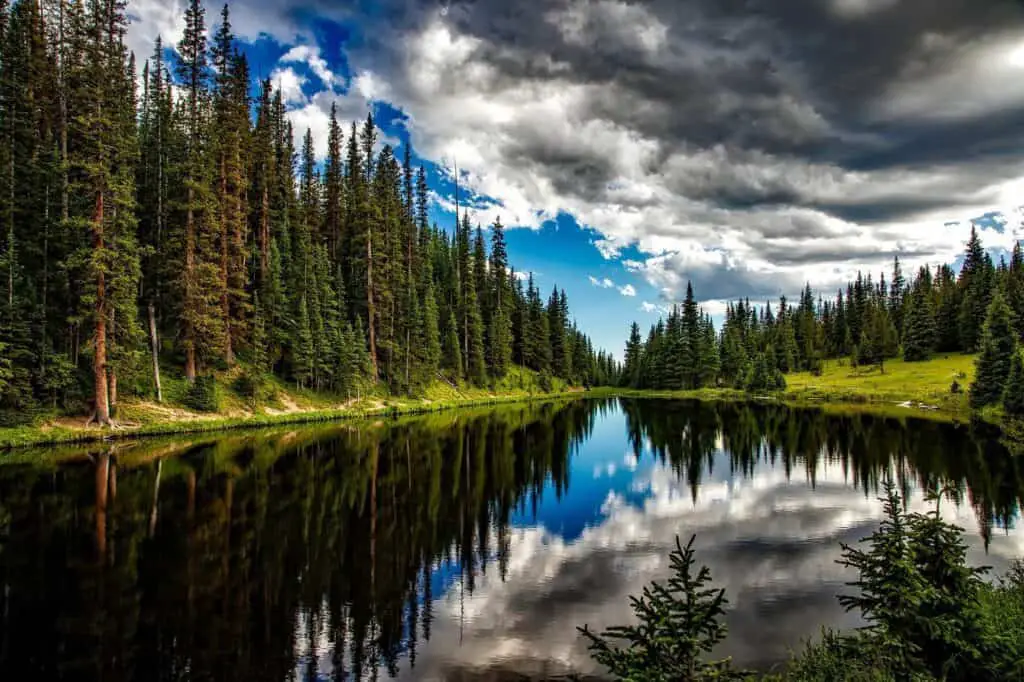
Where To Fish In Colorado?
Now we’re getting down to the real nitty-gritty of this guide, just where to fish during your trip to Colorado? The amount of fishing available in this state is so vast and varied that a guide of this scope can only offer a taste of what this great state has to offer.
However, since the good people at the Colorado Parks and Wildlife Service have already done some groundwork, I think it’s only fair to start by selecting the Gold Medal certified waters.
Colorado Gold Medal Fisheries
As we mentioned, these are the waters that have been designated to have at least 60lbs of trout per acre and at least a dozen larger fish in the same area. If you’re short on time during your visit and want to catch the best possible fishing, then you won’t go far wrong selecting one of these fisheries.
Upper Colorado River
The Colorado River seems like the prominent place to begin when compiling a guide to fly-fishing in Colorado. This stretch of river is one of the newest additions to the elite Gold Medal designation. The status has been awarded to the river’s length that runs between Canyon Creek and Rock Creek.
The Colorado River is one of the big draws for fly-fishers. Each year thousands of anglers descend upon its banks to fish for its legendary population of brown, rainbow, cutthroat, and brook trout.
Not that you’d know it, the river is big enough to absorb all this attention, and you can wander the banks for miles without seeing another angler.
The Gold Medal section can be easily accessed as the entire stretch follows Highway 40. Visiting this region in early June is when you will catch the salmonfly hatch, which makes for excellent fishing.
For fly selection, the recommendation varies depending on the time of year, but a good selection of dry flies and nymphs along with a few wet patterns will cover most circumstances. It’s always worth asking in a local tackle shop for any favorites that they can supply.
The Colorado River can seem a daunting place to fish, so if you want to make the most of your visit, you may want to consider the services of a fishing guide. The Colorado Fishing Network has a list of approved guides that can take you straight to the best spots.

Fryingpan River
The Fryingpan River is another on Colorado’s Gold Medal List. The length of the river below the Reudi Reservoir and to the point it meets the Roaring Fork River is the Gold Medal sector of the Frying Pan. It is a fourteen-mile stretch of river with a healthy population and includes many trophy-sized brown and rainbow trout. It is no wonder that it has been designated Gold Medal status.
Access is easy in most parts of the river, and land access usually is not a problem as the river runs through State-owned land and is situated partially in White River National Forest Park.
In its whole 14 mile stretch, around 9 miles has decent public access. This river can be fished all year round, but a great time to visit is from late June through to September when massive Green Drake Mayfly hatches.
If you don’t mind facing the bitter cold, then winter can be prolific too. Many of the larger fish are caught in this period, and the river is usually quieter also. There are midge hatches on most days in the winter months, and these continue through to the spring when there are new hatches of Caddis and Blue Winged Olives.
If you’re looking for guides to help you make the best of this river, then there are many registered and experienced guides available, including a great selection listed on Fish Anywhere.
Roaring Fork River
The Frying Pan joins the Roaring Fork River in the town of Basalt. The Roaring Fork then runs for a further 22 miles before its confluence with the Colorado River in Glenwood Springs.
This whole stretch is designated Gold Medal fishing. Effectively this means that when you take the Frying Pan into account, you have 36 miles of continuous top-class trout fishing.
The river flows alongside the Independence Pass Road right through Aspen before descending into the Roaring Fork Valley. Access to the headwaters is easy in most places as the river runs the White River National Forest.
While there is excellent fishing available wading from the bank, to experience the best that this river has to offer, then a boat or float trip is recommended.
There are many guides and local experts that can help you organize this. For instance, Harcourt Fly Fishing was voted Elevation Outdoor Magazine’s 2019 ‘Best Guide of the Rockies,’ and will happily arrange a float trip for you.
Fishing is for rainbow, brown and cutthroat trout, and as with all Gold Medal waters, it is of the highest class, with many trophy-sized fish caught annually.
There are hatches throughout the year on the river. In the winter, these consist of predominantly midges. The late summer sees prolific Green Drakes hatches, and if you happen to find yourself fishing in the midst of one of these, you will truly think you are in angler heaven.
Steamboat Lake
Situated about 27 miles north of Steamboat Springs, Steamboat Lake is a manmade reservoir of approximately 1100 acres in size. For anglers wanting to try a spot of lake fishing, this is certainly worth considering. It is one of only three lakes throughout Colorado to hold the coveted Gold Medal designation.
It can get busy at times as it is a Colorado State Park and attracts visitors not just for angling but for a host of outdoor activities. It is still possible to find a quiet spot, and you can also float or take to the water on a boat.
It is a great place to base yourself on camping or visiting in an RV as the lake has many campsites surrounding it. Check the Colorado Parks and Wildlife page on camping in the area.
The lake has a healthy population of crayfish, so take some crayfish flies along on your trip. There are also large hatches of midges, and there is an abundance of minnows and small crustaceans in the lake. Some decent sized lures are always a good bet here!
Late summer into the fall, you can have great success with crayfish imitations fished deep and slow.
The lake is often frozen for winter fishing, but if you’re of the hardy type, then ice-fishing trips are possible.
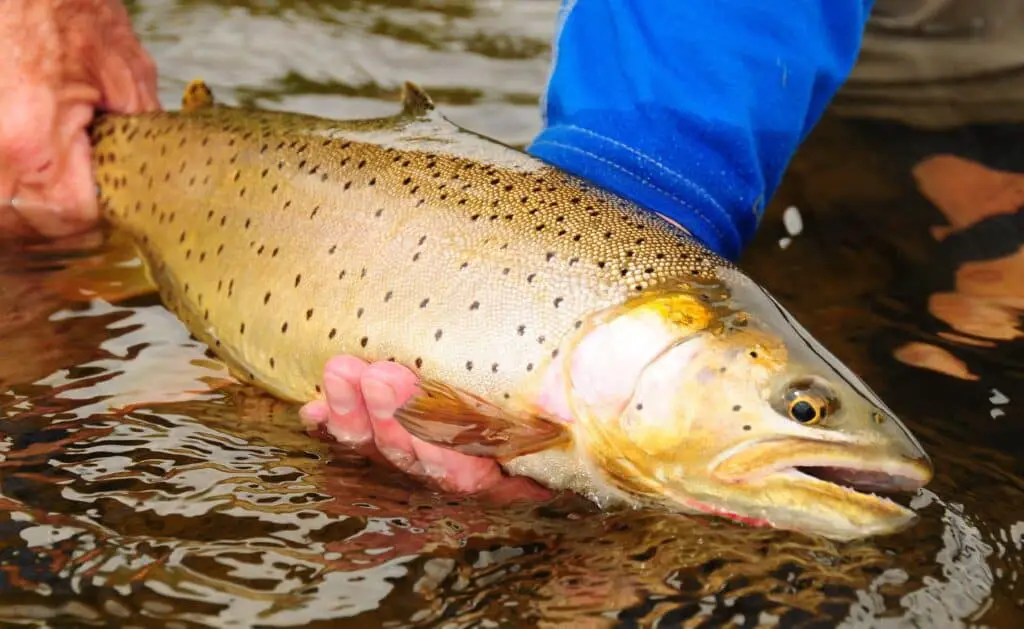
Gunnison River
The Gold Medal stretch of the Gunnison runs from the Crystal Dam, situated not far from Cimarron until it merges with the North Fork of the Gunnison River.
This stretch of river runs through the Black Canyon feature of Gunnison National Park. This makes this a tricky river to fish as it is a fast-flowing river with steep sides. The Gunnison is the fifth steepest descent of any river in North America!
The Gunnison offers the fishing that you’d expect from a Gold Medal location, but its awkward terrain and difficult access mean it is one of the lighter fished Gold Medal rivers.
Due to the terrain’s difficulty, it is highly recommended that a local guide is used to ensure a good and safe fishing trip. Gunnison River Guides are among the specialist guides that can help you make fishing the Gunnison a memorable trip.
For those who fish the Gunnison, the results can be spectacular. Species to fish for include cut bow, rainbow, cutthroat, and brook trout. There is also a late summer/early fall run of Kokanee Salmon to tantalize you.
Winter is when the fishing is at its harshest, and only for the more adventurous souls. During the summer, dry-flies can offer great sport, and there are some major hatches to look for, including a salmonfly hatch, which is most predominant from mid-June into July.
Later in the year, the salmon runs from August until October, and around this time, the brown trout moves into the river from the Blue Mesa Reservoir to spawn. This is when many of the trophy fish are caught.
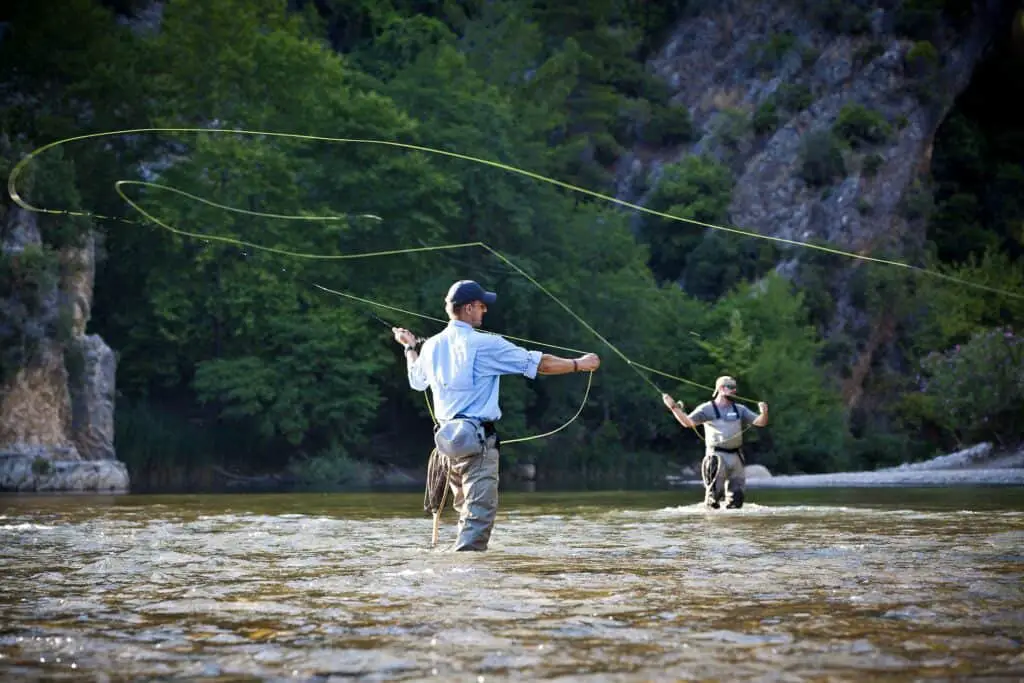
Other Colorado Fly-Fishing Locations
While the Gold medal fishing is obviously of the highest standard, it doesn’t mean that this is the only fishing Colorado offers. It would be unfair to say that Colorado fly fishing should be restricted to these waters.
It is a testament to the quality and quantity of the fishing available in the state that any of the following rivers would be listed as Gold Medal if they were located in just about any other location on the planet.
Cimarron River
Shhh, don’t tell anyone, but the Cimarron River is one of Colorado’s best-kept secrets. Its proximity to the Gunnison River may be one of the reasons that this river is sparsely fished. But don’t let this put you off. The crystal-clear waters of this river are teeming with cutthroat and rainbow trout.
The best fishing on the river is higher up towards the headwaters in the Gunnison River Basin. However, the whole river can provide excellent fishing with miles of shallow freestone interspersed with areas of deep dark pools that have plenty of trout lurking in them.
Accessibility for the upper reaches is relatively easy for most of its length. Follow Highway 50, and the river is never more than a short hike away. Similarly, one of the other hotspots is the tailwater, which lies close to the Silver Jack Reservoir and is also accessible from the same highway.
This river’s best time is late summer into fall when prolific hatches of stoneflies, mayflies, and caddis get the fish feeding.
If you fancy a guide to help you fish the river, several local guides can take you right to the fish. The staff at Fish Rigs will happily offer you advice and tips and, if required, organize a guided day out.
White River
Situated in the Flat Tops Wilderness, this is one of the most stunning locations to fish you are ever likely to come across. A healthy population of rainbow, cutthroat, and brown trout are the only things likely to take your mind of the surroundings.
The fishing here is so good that bears will often come for a spot of fishing too! Before you make any trip, consider carrying bear spray with you if you fish the White River.
Access to the river is readily available from Highway 13 and County Road 8 and is particularly easy close to Buford and Meeker.
Catching the Mayfly hatch in spring and early summer is when the river is at its best, there are also good hatches of Caddis in the fall, and throughout the winter, there are always midges hatching.
If you decide to catch the Mayfly season, it is best to book any accommodation and or guides early as the Mayfly season is when the river is at its busiest.
If you fancy a spot of luxury, the Orvis endorsed White River Inn can offer accommodation and thoroughly planned out fishing trips.
Tackling Down
It is impossible to begin to cover the options and places to fish in this beautiful state. The rivers and lakes that we covered are a mere sampling of the variety of fishing available.
Colorado is one of the premier fly-fishing locations in the world, and if you are ever fortunate enough to fish here, then one thing you will never be is disappointed.
However, to make the most of your trip, you should plan it around the correct location at the proper time. There is nothing more frustrating than to hear (and we’ve all heard it too many times) ‘You should have been here last week when the Mayflies were hatching!’
All that’s left to say is ‘Tight Lines.’
If you find this article helpful, don’t leave without sighing up for our newsletter and checking out our Recommended Fly Fishing Gear List.
